Frequently Asked Questions About Wood Burning Fireplaces
In order to safely operate your wood burning fireplace, the flue damper must be fully open. If the damper is not fully open, smoke and carbon monoxide from the fire will vent into your home. To open the damper, locate the lever at the top of the inside of your fireplace. Depending on your fireplace model, the lever will either shift from side to side or up and down to open your damper.
The second handle you may find in your fireplace (usually located on the left inside panel) is a control lever for the outside air kit. When burning your fireplace, the outside air kit lever should always be in the open (or up) position. The outside air kit is designed to provide additional air for combustion.
First, make sure your fireplace damper is fully open. If the damper is not fully open, smoke and carbon monoxide from the fire will vent into your home. Also, it is important that you not “over-fire” your fireplace. The first fires in your new wood burning fireplace should be small.
If your fireplace has a gas starter, preheat the flue before arranging the logs on the grate. To do this, light a long match or lighter and set it just above the holes in the gas starter. Next, turn on the gas valve (located on the wall next to your fireplace). The gas should ignite within a few seconds. If your match or lighter goes out before the gas ignites, turn off the gas, wait a few minutes, and start the procedure over. Once the gas ignites in the fireplace, let it burn for about 10 to 15 minutes to preheat your flue. After the flue is preheated, turn off your gas and arrange your logs on the fireplace grate — leaving sufficient space between them for combustion air to flow properly. Once your logs are arranged, relight your gas starter, as described above, to start your wood fire. Once the wood is lit and the fire is burning to your satisfaction, turn off the gas at the gas valve.
If your fireplace does not have a gas starter, arrange kindling (small diameter sticks) in a crisscross pattern on top of crumpled newspaper under the grate. Next, arrange split logs on the grate, leaving sufficient space between them for combustion air to flow properly. Using a match or a lighter, ignite the crumpled newspaper. Enjoy your fire.
While your fire is burning, always keep the wire mesh screen closed. If your fireplace is equipped with glass doors, leave them fully open when starting your fire. After the wood fire is burning well, the doors may be closed. NOTE: When burning wood in fireplaces equipped with glass doors, the doors should be either fully opened or fully closed. If the doors are left partially open, gas and flame may be drawn out of the fireplace opening, creating a safety hazard.
First, make sure the fireplace flue damper is fully open. If the damper is not fully open, smoke and carbon monoxide from the fire will vent into your home. To open the damper, locate the lever at the top of the inside of your fireplace. Depending on your fireplace model, the lever will either shift from side to side or up and down to open your damper.
If your wood fire does not stay lit after the gas is turned off, your wood may be too green to burn or may need to be split into smaller pieces. For best results, use oak, maple, hickory, or similar hardwoods. The wood should be dry and aged nine months to a year before use.
If it appears that the wood you are burning is not the problem, make sure all the air handling systems (heating, air conditioning, fans, etc.) in your home are turned off when burning your fire. Also, some wood burning fireplaces have a lever to open or close the outside air vent to the fireplace. If your fireplace has this lever (usually located on the left inside panel) make sure the outside air vent is in the open (or up) position. The outside air kit is designed to provide additional air for combustion.
To enhance airflow for optimal wood fire efficiency in Texas heat, ensure proper chimney drafting and use seasoned wood for cleaner burns. Make sure the damper is open. You may need to crack a nearby window to create proper airflow in the room.
When choosing the right fireplace for your home, it’s important to consider the size of the room where the fireplace will be located, your aesthetic interests, and heat requirements. You may opt for a small or large fireplace. You may consider a traditional look or add features like gas logs, fire glass, or fireplace balls to create a more modern look.
Do not remove hot ashes from the fireplace immediately. Wait up to two to three days to allow ashes to cool completely in the fireplace. When there are no remaining hot embers, remove the ashes from the fireplace by placing them in a metal container. Move the container outside the house and garage, and well away from anything combustible.
All prefabricated fireplace installations need to adhere to the manufacturer’s specifications. These specifications include fire safety distances to combustible materials such as mantles or surrounds, chimney height, and chimney placement. If a prefabricated fireplace is not installed to these specifications, it will void the warranty and could be a fire hazard. Depending on where you are building your home, a fireplace permit may need to be obtained prior to installation.
First thing’s first! Be sure you are using seasoned, dry wood in your fire. Then, according to the Environmental Protection Agency (EPA), in Texas’ humid climate, it’s best to opt for dry kindling (like newspaper or dry twigs) paired with all-natural fire starters for efficient ignition in damp conditions. This will help ensure a successful fire start. Consider running gas or propane to the fireplace and installing a natural gas or propane log lighter.
Just because it’s combustible doesn’t mean you should burn it in your wood burning fireplace! Do not burn household trash such as cardboard, plastic, foam, wrappers, or magazine pages. Do not burn particle board or coated, painted or pressure treated wood. Do not burn wood with glue in or on it. Do not burn wet, rotted, diseased, or moldy wood.
Check out our Wood Burning Fireplaces page for links to online resources about operating and maintaining your fireplace. You can also check out the online Fire Prevention and Life Safety Guidebook (see page 11) created by the Houston Fire Department for valuable safety information and tips.

